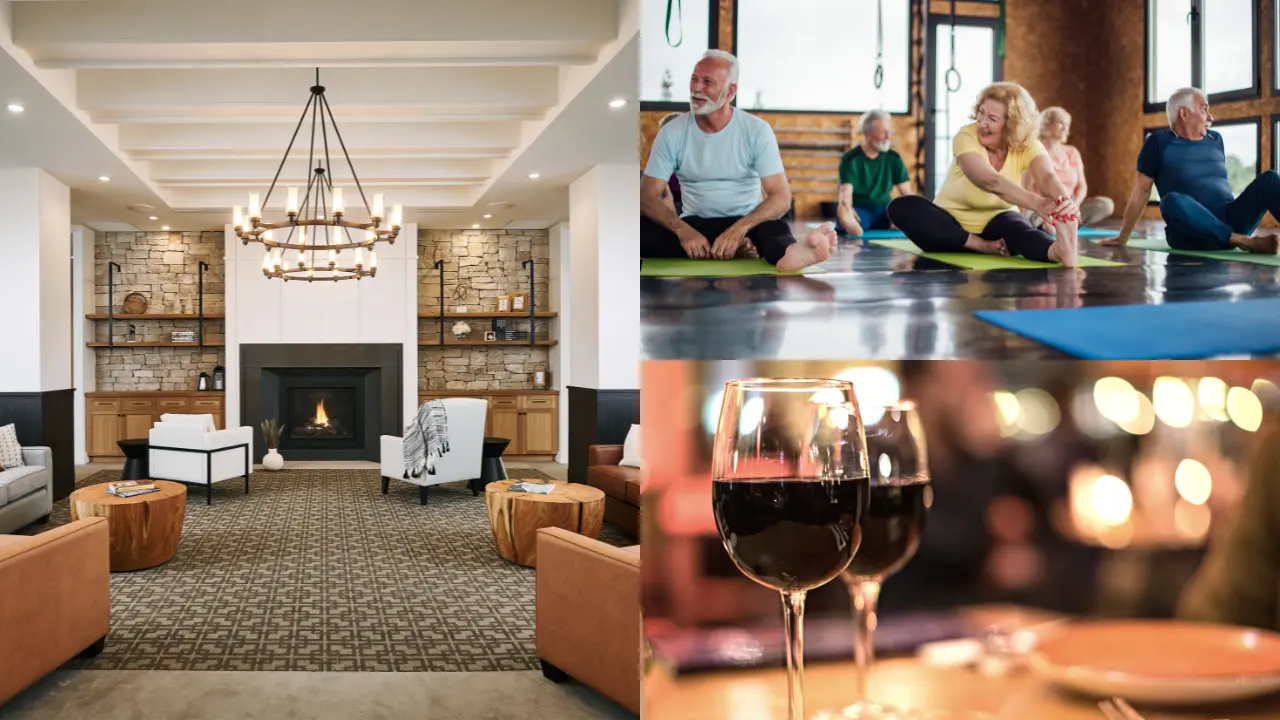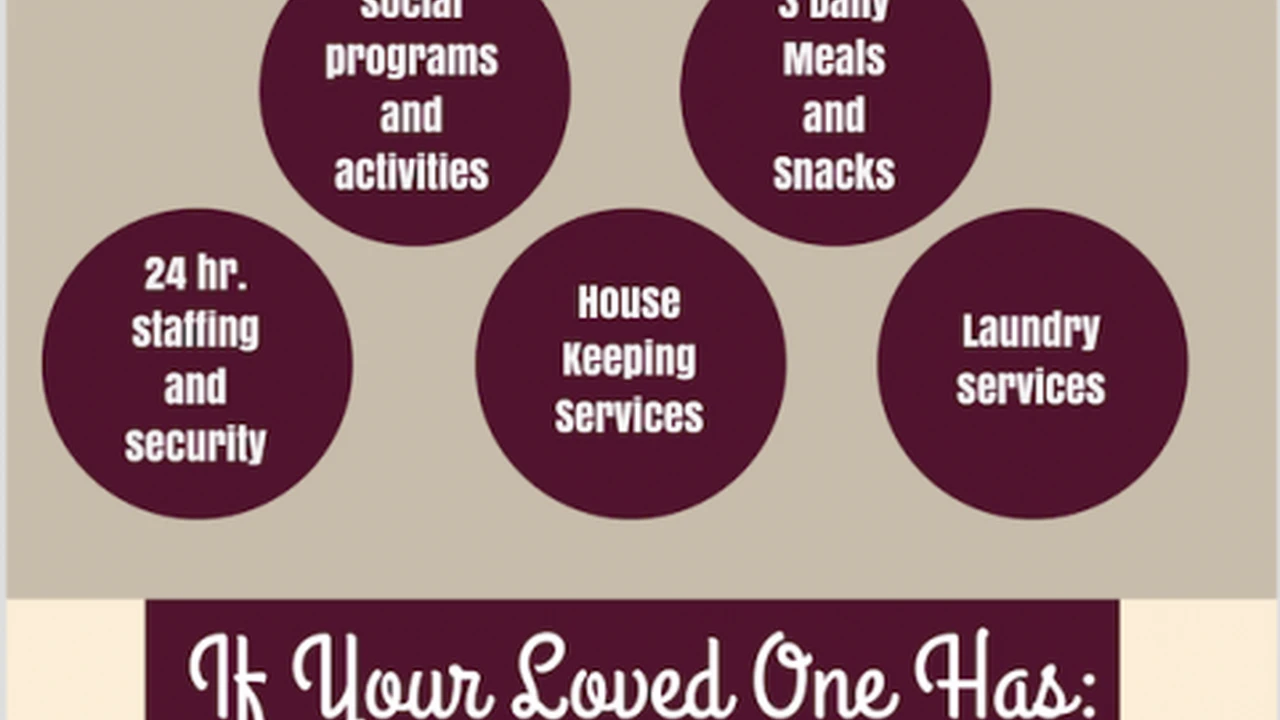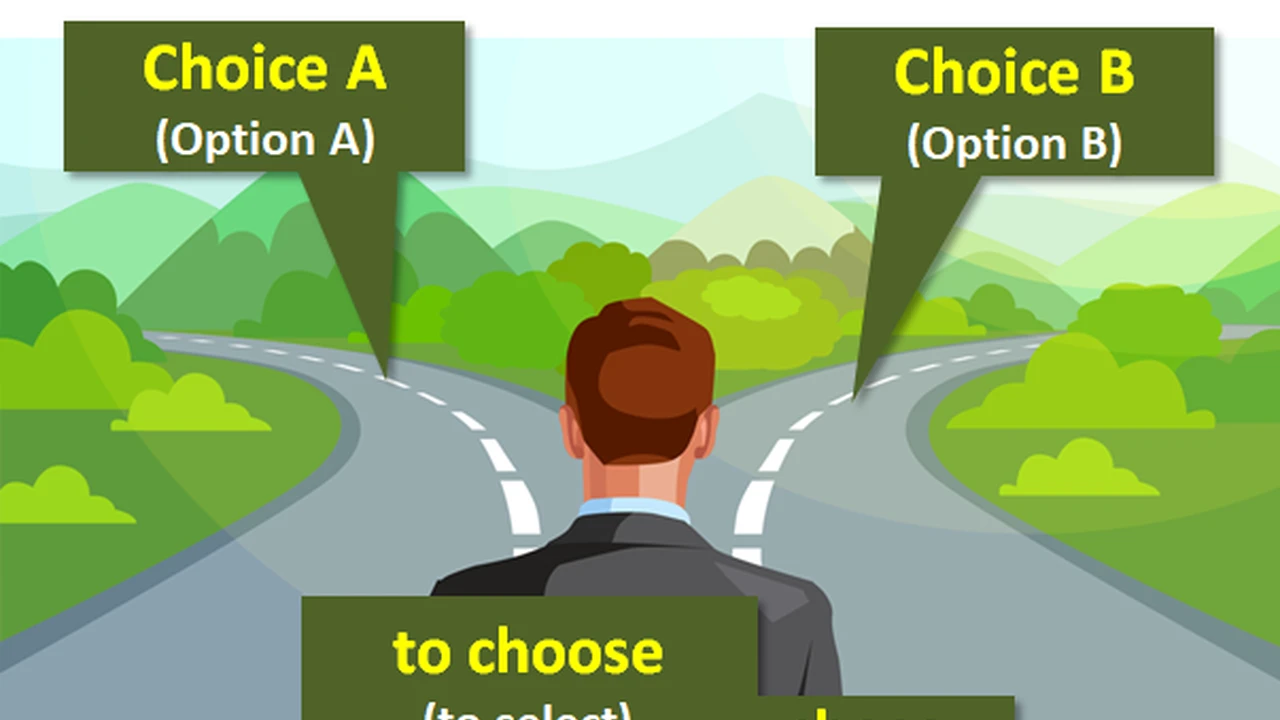7 Benefits of Independent Living for Seniors
Learn about the key advantages of independent living, including social engagement, freedom, and convenience for older adults.

7 Benefits of Independent Living for Seniors
Embracing Freedom and Independence in Senior Living
Independent living communities are designed for seniors who are generally healthy and active, but want to shed the burdens of homeownership and enjoy a more vibrant, social lifestyle. It's about maintaining your autonomy while gaining access to a wealth of amenities and services that simplify daily life. Think of it as a resort-style living experience tailored for older adults. This isn't assisted living, where personal care is a primary focus; independent living is for those who can manage their daily activities without significant help, but appreciate the convenience and community.
Social Engagement and Community Connection for Seniors
One of the most significant advantages of independent living is the built-in social network. Loneliness and isolation can be serious issues for seniors, impacting both mental and physical health. Independent living communities actively combat this by fostering a strong sense of community. Residents have countless opportunities to connect with peers who share similar interests and life experiences. Imagine daily social events, clubs, and group outings right at your doorstep. This constant interaction can lead to new friendships, intellectual stimulation, and a renewed sense of purpose. It's a far cry from feeling isolated in a large, empty house.
Many communities offer a diverse calendar of events. For example, you might find:
- Book clubs and discussion groups
- Fitness classes like yoga, tai chi, or water aerobics
- Art workshops and craft sessions
- Game nights (bridge, poker, bingo)
- Movie screenings and live entertainment
- Organized day trips to local attractions, museums, or shopping centers
- Volunteer opportunities within the community or local area
These activities are not just about filling time; they are about creating meaningful connections and keeping residents engaged and mentally sharp. The ease of access to these social opportunities, without the need for personal transportation or extensive planning, makes it incredibly appealing.
Convenience and Maintenance-Free Living for Older Adults
Let's be honest, homeownership can be a lot of work. Mowing the lawn, cleaning gutters, fixing leaky faucets, and dealing with unexpected repairs can become increasingly challenging and stressful as we age. Independent living eliminates these headaches entirely. Residents typically live in apartments, cottages, or villas where all exterior and often interior maintenance is handled by the community staff. This frees up an enormous amount of time and energy that can then be dedicated to hobbies, travel, or simply relaxing.
Beyond maintenance, many communities offer a range of convenient services:
- Housekeeping and laundry services
- Scheduled transportation for appointments, shopping, or outings
- On-site dining options, often with flexible meal plans
- 24-hour security and emergency response systems
- Concierge services to assist with various needs
Imagine waking up knowing you don't have to worry about cooking, cleaning, or driving if you don't want to. This level of convenience significantly reduces daily stress and enhances overall quality of life.
Access to Amenities and Services for Active Seniors
Independent living communities are often packed with amenities designed to promote an active and fulfilling lifestyle. These can vary widely from one community to another, but generally aim to provide residents with everything they need or desire right on campus. This means less time spent traveling and more time enjoying life.
Common amenities include:
- Fitness centers and swimming pools
- Libraries and computer labs
- Beauty salons and barbershops
- Game rooms and common lounges
- Walking trails and outdoor spaces
- Chapels or meditation rooms
- Guest accommodations for visiting family and friends
Some communities even boast more luxurious offerings like golf courses, spas, or performing arts centers. The availability of these amenities encourages residents to stay physically active, mentally stimulated, and socially connected, all within a safe and accessible environment.
Enhanced Safety and Security for Peace of Mind
Safety is a paramount concern for seniors and their families. Independent living communities prioritize the well-being of their residents through various security measures. This can provide immense peace of mind, especially for those who live alone or have concerns about home invasions or medical emergencies.
Typical safety and security features include:
- Gated entrances and controlled access
- 24-hour security personnel or surveillance
- Emergency call systems in residences (pendants or wall-mounted buttons)
- Well-lit common areas and pathways
- Fire detection and sprinkler systems
- Staff available around the clock for assistance
Knowing that help is always just a button press away, and that the community is actively monitored, allows seniors to live with greater confidence and less anxiety. This is particularly valuable for families who may live far away and worry about their loved one's safety.
Nutritious Dining Options and Healthy Lifestyles
Maintaining a healthy diet can become challenging for seniors, especially if cooking for one feels like a chore or if mobility issues make grocery shopping difficult. Independent living communities often provide excellent dining services, offering nutritious and delicious meals prepared by professional chefs. This ensures residents receive balanced meals without the hassle of cooking or cleaning up.
Dining options often include:
- Multiple dining venues, from casual bistros to formal restaurants
- Flexible meal plans to suit individual preferences
- Dietary accommodations for specific health needs (e.g., diabetic, low-sodium)
- Opportunities for social dining with friends
- Guest dining options for family visits
Beyond meals, many communities promote overall healthy living through fitness programs, wellness seminars, and access to healthcare resources. This holistic approach supports residents in maintaining their physical and mental well-being.
Future Planning and Continuum of Care Options
While independent living is for active seniors, many communities offer a continuum of care, meaning they have assisted living, memory care, or skilled nursing facilities on the same campus or through preferred partnerships. This provides a significant advantage for future planning. Should a resident's health needs change over time, they can often transition to a higher level of care without having to move to an entirely new location or community. This familiarity and continuity can be incredibly comforting for both seniors and their families.
This 'aging in place' model reduces the stress and disruption associated with multiple moves and allows residents to maintain their social connections and familiar surroundings even as their care needs evolve. It's a proactive approach to senior care that offers long-term stability and peace of mind.
Choosing the Right Independent Living Community for Your Needs
When considering independent living, it's important to research and visit several communities to find the best fit. Factors like location, cost, amenities, and the overall culture of the community should all be taken into account. Don't hesitate to ask questions, speak with current residents, and participate in activities during your visit. This is a significant life decision, and finding the right environment can profoundly impact your quality of life in your golden years.
For those looking for specific products or services that complement independent living, consider these options:
Smart Home Devices for Senior Independence and Safety
Even within an independent living community, smart home devices can add an extra layer of convenience and safety. They are particularly useful for managing daily tasks and providing peace of mind.
Voice Assistants: Amazon Echo Show vs Google Nest Hub
- Amazon Echo Show 8 (3rd Gen): This device features a vibrant 8-inch HD screen and powerful speakers. It's excellent for video calls with family, watching news, setting reminders, and controlling smart home devices with voice commands. The 'Drop In' feature allows trusted contacts to connect instantly, which can be a great safety net. Price: Around $150-$180.
- Google Nest Hub (2nd Gen): With a 7-inch screen, the Nest Hub is known for its seamless integration with Google services. It's great for displaying photos, following recipes, and managing calendars. Its 'Sleep Sensing' feature can also provide insights into sleep patterns without requiring wearables. Price: Around $100-$120.
Comparison: The Echo Show often has a slight edge in video calling and smart home device compatibility, especially with Amazon's vast ecosystem. The Nest Hub excels in its integration with Google's search and calendar functions. Both offer excellent voice control for setting alarms, playing music, and getting information. The choice often comes down to personal preference and existing smart home ecosystems.
Smart Lighting Systems: Philips Hue vs. Lutron Caseta
- Philips Hue Starter Kit: This system offers a wide range of smart bulbs that can change color and brightness. It's easy to install and control via a smartphone app or voice assistant. Seniors can set schedules for lights to turn on/off, or dim them for comfort, reducing the risk of falls in the dark. Price: Starter kits typically range from $70-$100.
- Lutron Caseta Wireless Dimmer Kit: While a bit more involved to install (requires replacing light switches), Lutron Caseta offers incredibly reliable performance and physical remotes that can be placed anywhere. This is ideal for seniors who prefer tactile buttons over voice commands or smartphone apps. It's also highly compatible with other smart home systems. Price: Starter kits around $100-$150.
Comparison: Philips Hue is simpler for basic smart lighting and offers more aesthetic options with color. Lutron Caseta provides more robust control and is often preferred for whole-home solutions, especially if physical switches are important. Both enhance safety by ensuring well-lit environments and can be controlled remotely.
Personal Emergency Response Systems (PERS) for Senior Safety
Even in a secure independent living community, a PERS device provides an immediate link to help in case of a fall or other emergency. These are crucial for maintaining independence while ensuring safety.
Medical Alert Systems: Life Alert vs. MobileHelp
- Life Alert: A well-known brand, Life Alert offers in-home and mobile systems. Their 'Help, I've fallen and I can't get up!' slogan is iconic. They provide 24/7 monitoring and dispatch emergency services. Their systems are generally robust but can be pricier with longer contract terms. Price: Monthly fees typically range from $30-$50, often with activation fees.
- MobileHelp Classic: MobileHelp offers a range of systems, including in-home and mobile options with GPS. Their Classic system includes a base unit and a waterproof pendant. They are known for their user-friendly devices and flexible plans. Many of their mobile units include fall detection. Price: Monthly fees typically range from $20-$40, with various package options.
Comparison: Life Alert has a long-standing reputation but can be more expensive. MobileHelp often provides more modern features like GPS tracking and automatic fall detection in their mobile units, often at a more competitive price point. Both offer reliable 24/7 monitoring. The choice depends on budget, desired features (especially fall detection and GPS), and contract preferences.
Mobility Aids for Active Independent Living
For seniors who might need a little extra support to stay active and mobile, certain aids can make a big difference.
Rollators: Drive Medical Rollator Walker vs. Hugo Elite Rollator
- Drive Medical Rollator Walker with Seat: This popular rollator is lightweight, foldable, and features a padded seat with a backrest, making it convenient for resting during walks. It has large wheels for easy maneuverability and hand brakes for safety. Price: Around $70-$100.
- Hugo Elite Rollator Walker with Seat: The Hugo Elite is known for its comfortable seat, larger wheels for stability, and a convenient under-seat storage bag. It's also height-adjustable and foldable, offering a good balance of comfort and practicality. Price: Around $100-$130.
Comparison: Both are excellent choices for providing stability and a place to rest. The Hugo Elite often gets higher marks for comfort and slightly more robust construction, while the Drive Medical is a very solid, more budget-friendly option. The key is to ensure the rollator is the correct height and comfortable for the user.
Medication Management Systems for Senior Health
Managing multiple medications can be complex. Automated dispensers can significantly reduce errors and ensure adherence.
Automated Pill Dispensers: MedMinder vs. Philips Medication Dispenser
- MedMinder Maya: This smart pill dispenser offers locked compartments, visual and auditory alerts, and remote monitoring capabilities. It can send alerts to family members or caregivers if doses are missed. It's particularly good for complex medication schedules. Price: Monthly service fees typically range from $40-$60, often with a device fee.
- Philips Medication Dispenser: Known for its simplicity and reliability, this dispenser provides audible and visual alerts and dispenses the correct dose at the scheduled time. It's pre-filled by a pharmacist or caregiver, ensuring accuracy. It also has a locked design to prevent tampering. Price: Monthly service fees typically range from $50-$70, often with an initial setup fee.
Comparison: Both offer excellent solutions for medication adherence. MedMinder often provides more advanced remote monitoring and reporting features, which can be very reassuring for caregivers. Philips is known for its robust, user-friendly design and strong focus on preventing medication errors. The choice often depends on the level of remote oversight desired and the complexity of the medication regimen.
By leveraging the benefits of independent living and incorporating these types of supportive products, seniors can truly thrive, enjoying a fulfilling, active, and secure lifestyle.
:max_bytes(150000):strip_icc()/277019-baked-pork-chops-with-cream-of-mushroom-soup-DDMFS-beauty-4x3-BG-7505-5762b731cf30447d9cbbbbbf387beafa.jpg)






